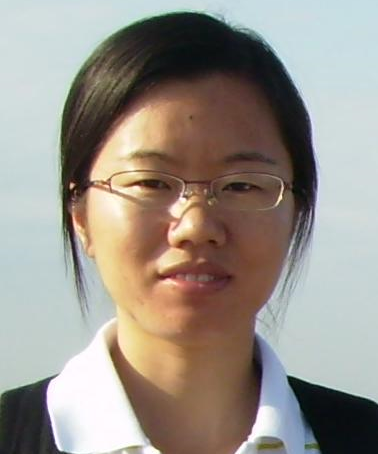
Zhuqing Zhang
Professor, College of Life Sciences
Email: zhuqingzhang@ucas.ac.cn
Address: 19A Yuquanlu, Beijing, P R China
Postcode: 100049
Research Areas
Theoretical and computational simulation on the mechanism of protein folding and allostery, the conformation ensemble and dynamics of intrinsically disordered proteins, as well as the mechanism of protein phase separation; data mining using mechine learning.
Experience
Work Experience
2005-2007 Postdoctoral Fellow, College of Chemistry and Molecular Engineering, Center for Theoretical Biology, Peking University
2008-2011 Postdoctoral Fellow, Departments of Biochemistry, University of Toronto
2011.6-present Associate Professor, Professor, College of Life Sciences, University of Chinese Academy of Sciences
Teaching Experience
"Single-molecule techniques in biology", 2012-2015
"Computational Biology", 2012-2015
Publications
Papers
1. Shaofeng Liao, Yujun Zhang, Yifei Qi*, Zhuqing Zhang*. Evaluation of sequences-based predictors for phase separating protein. Brief Bioinform. 2023: 24(4):bbad213.
2. Xiaoquan Chu†, Tanlin Sun†, Qian Li, Youjun Xu, Zhuqing Zhang*, Luhua Lai*, Jianfeng Pei*. Prediction of liquid-liquid phase separating proteins using machine learning. BMC Bioinformatics. 2022:23(1):72 [Highly Cited Papers, 2023]
3. Xi Wang†, Xiang Zhou†, Qinglin Yan†, Shaofeng Liao, Wenqin Tang, Peiyu Xu, Yangzhenyu Gao, Qian Li, Zhihui Dou, Weishan Yang, Beifang Huang, Jinhong Li, Zhuqing Zhang*. LLPSDB v2.0: an updated database of proteins undergoing liquid-liquid phase separation in vitro. Bioinformatics. 2022:38(7):2010-2014 (†equal contribution)
4. Qian Li†, Xiaojun Peng†, Yuanqing Li, Wenqin Tang, Jia'an Zhu, Jing Huang, Yifei Qi and Zhuqing Zhang*. LLPSDB: a database of proteins undergoing liquid–liquid phase separation in vitro. Nucleic Acids Res. 2020:48:D320-327 (†equal contribution) [ F1000Prime: https://f1000.com/prime/736585742]
5. Likun Zhao, Luhua Lai*, Zhuqing Zhang*. How calcium ion binding induces the conformational transition of the calmodulin N-terminal domain-an atomic level characterization. Phys Chem Chem Phys. 2019,21;19795-19804. [2019 PCCP HOT ARTICLE]
6.Yanhua Ouyang, Likun Zhao, Zhuqing Zhang*. Characterization of the structural ensembles of p53 TAD2 by molecular dynamics simulations with different force fields. Phys Chem Chem Phys. 2018,20:8676-8684.
7. Jie Hu, Tao Chen, Moye Wang, Hue Sun Chan*, Zhuqing Zhang*. A critical comparison of coarse-grained structure-based approaches and atomic models of protein folding. Phys Chem Chem Phys. 2017,19:13629-13639. [2017 PCCP HOT ARTICLE]
8. Zhuqing Zhang*, Yanhua Ouyang, Tao Chen. Influences of heterogeneous native contact energy and many-body interactions on the prediction of protein folding mechanisms. Phys Chem Chem Phys. 2016,18:31304-31311
9. Zhuqing Zhang, and Hue Sun Chan*. Transition paths, diffusive processes, and preequilibria of protein folding. Proc Natl Acad Sci U S A. 2012,109:20919-20924
10. Hue Sun Chan*, Zhuqing Zhang, Stefan Wallin and Zhirong Liu. Native Topology, Local-Nonlocal Coupling, and Nonnative Interactions: Principles of Protein Folding from Coarse-Grained Models. Annu Rew Phys Chem. 2011,62:301-332
11. Zhuqing Zhang, and Hue Sun Chan*. Competition between Native Topology and Nonnative Interactions in Simple and Complex Folding Kinetics of Natural and Designed Proteins. Proc Natl Acad Sci U S A. 2010,107:2920-2925
12. Zhuqing Zhang, Hao Chen, Luhua Lai*. Identification of amyloid fibril-forming segments based on structure and residue-based statistical potential. Bioinformatics. 2007,23:2218-2225
13. Zhuqing Zhang, Hao Chen, Hongjun Bai, Luhua Lai*. Molecular dynamics simulations on the oligomer formation process of the GNNQQNY peptide from yeast prion protein Sup35. Biophys J. 2007,93;1484-1492
